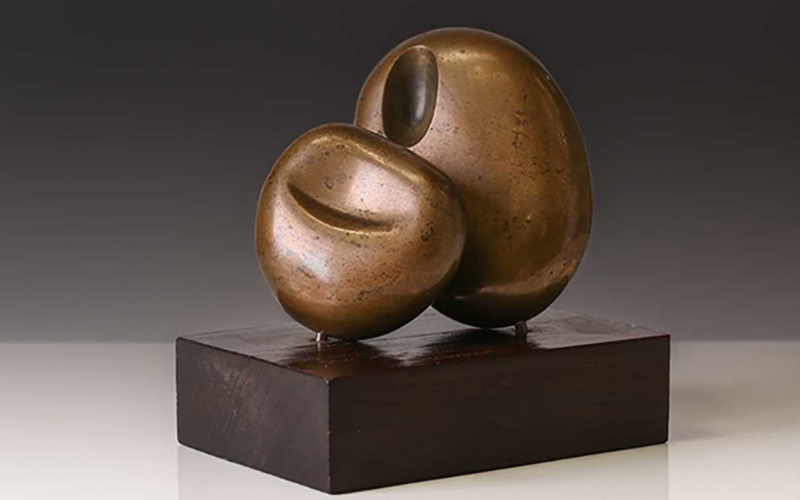How Do I Sell an Expensive Piece of Art?
Valuable works of art should be correctly appraised, catalogued and insured
26/04/2024
Have you recently discovered an impressive painting in the loft, or perhaps you have been fortunate enough to inherit desirable artwork from a loved one? However, you may have come to possess potentially valuable art, an understanding of what you have and how much it is worth is essential. Valuable works of art should be correctly appraised, catalogued and insured to avoid unnecessary losses in the future.
Barbara Hepworth DBE (1903-1975) British, 'Two Forms (Atlantic)', polished bronze
Once a value has been established, you may decide to part with the piece as it is not to your liking or perhaps you would prefer to utilise the finances for alternate investments.
A work of art’s value is determined by certain factors, including who the artist is, the subject matter and title of the work, the size, the Medium (i.e., oil, watercolour, acrylic, etc.), when it was created, the condition, provenance (including previous selling history and owners), any relevant documents (invoices, appraisals, references, etc.).
Once you have gathered as much of this information as possible, you may be able to determine an approximate value of your artwork from online resources. As some artists are more popular than others, you may discover that your artwork could potentially be quite valuable. You may also discover that you cannot decipher the signature or that there is no paperwork to identify what the art is.
Follower of Filippino Lippi (1457-1504)
At this point you should always contact a reputable expert in the field, either a specialist dealer who has extensive knowledge of the artist, or an auction house who will have inhouse art experts with a wealth of knowledge and experience regarding various artists, their works, and current trends. Here at Dawsons our knowledgeable team of art valuers will be able to provide an accurate current market valuation.
Once you’ve decided to sell, there are a few ways to sell a valuable piece of art.
Gallery: find a gallery that handles art in similar genres, artists, regions, subject matter, or periods as your art. They will either offer to purchase outright, or you can place the work in their gallery for sale - this offers moderate exposure to the gallery clientele who might be interested in your work of art. Be aware that you may be charged a monthly fee for exhibiting.
Thomas Buttersworth (1768-1842)
Dealer: contact a reputable dealer that specialises in the artist of your artwork. Most dealers have a very in-depth knowledge of their specific genre, so it is important to track down the best person for the sale. They will have a knowledge of where and who might be interested in your art. Note that the Dealer will be looking to buy at a far lower price that the artwork will eventually be sold at.
Direct: finally, you could sell your art outright directly to an individual. You will need to have extensive knowledge, documentation, and images of your work. This avenue requires far more work on the part of the seller, and it may take a lot longer to find a suitable buyer. If you are not a seasoned art collector, we would highly recommend not attempting to sell your expensive art directly, the risks outweigh the rewards.
Auction: a reputable auction house, such as Dawsons, will consign your works to a Fine Art sale which is broadcast live across multiple auction platforms to a global audience of over 10 million active bidders for maximum exposure. Whilst innovative in-house marketing direct to buyers all over the world, allied with creative social media posts, ensures they achieve the highest returns for clients. Remember that they are working for you and aiming to secure the highest prices for your artwork.
Read more
How much is Modern British Art Worth?
How Can You Tell if a Painting is Rare?
Are you considering selling a valuable piece of art?
With a huge global audience of known buyers, Dawsons can secure the best price for you.
Get in touch with an expert valuer today for confidential sales advice, we would be delighted to help:

 edited copy.jpg)
 edited copy.jpg)